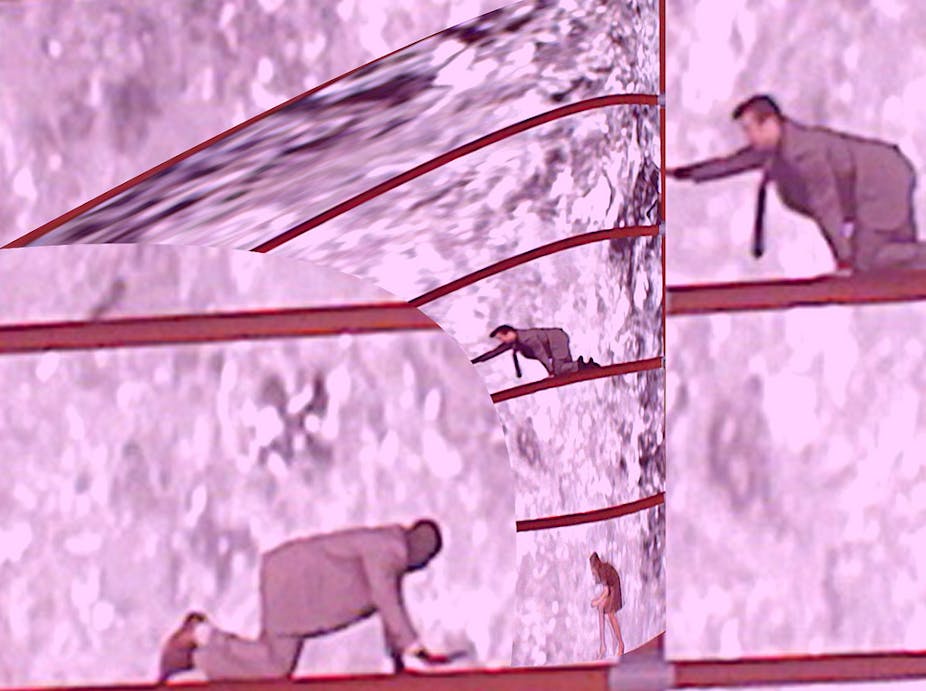A white paper was released this week stating that “Gen Y” employees could be better engaged and motivated by applying “game dynamics” to the workplace. Bunchball, the company behind the paper, would say that of course, because it sells technology that allows other software vendors to “gamify” their products.
But what, exactly, is the argument?
Gamification is the term used when game dynamics are applied to engage customers for business, or to engage the general public to solve problems.

To date it has been employed for everything from crowd-sourcing – to discover how proteins fold – to motivating children to exercise.
Given its origins in video and computer games, the mechanics of gamification will be familiar to gamers. They involve the use of points, levels of skill or mastery, and rewards.
You have scored 20 points and earned the Principles of Gamification Badge
Gamification really gained attention through its application in the social gaming network foursquare which was established in 2009.
On foursquare, players can “check in” at any location and earn points. When someone has checked in more than anyone else, they become “mayor” of that location and are publicly acknowledged. The mayor also becomes eligible for discounts and other specials where these are offered.
On passing the 15 million user mark in 2011, foursquare had seen:
- 4.7 million users check in on main streets in the US
- 6,230 users check in to sake bars in Japan, and
- 1,602 users check in to weddings in US city halls.

People check in to foursquare for no other reason than to receive points for their first sushi bar or foreign destination. Of course, there is a social element to foursquare – you can link your location to Facebook or Twitter to let your friends know where you are. Similarly, foursquare tells you who else is checked in at a particular location, so you could find out if you have friends at a concert, for example.
You have scored 30 points and reached Level 1: Novice of Gamification
The site Fun Theory has examples of turning everyday activities into games to encourage positive behaviour. Turning a set of stairs into an interactive piano encouraged 66% of people to use the stairs rather than the accompanying escalator.
Gamification’s principle aim is to motivate people and to keep them engaged, whether the activity is visiting a website or improving their health. Its role in health is of special interest because keeping people motivated when dealing with preventative measures or maintaining treatments has traditionally been very hard.
Zamzee is a site promoting exercise to children by allowing them to record and upload activity data. The kids’ activity is measured using the Zamzee device, a small digital pedometer. Points are awarded according to the level of activity and leader boards show the users with the most activity, best improvement, most consistent activity etcetera. The points can also be traded for actual physical gifts.
Research by the founders of Zamzee has shown that participating in the site increased activity by 30% over the course of the study.
MeYou Health has created an application that sets a daily challenge to promote improved wellbeing and better health – such as visiting the American Heart Association’s website and learning how to avoid ordering fatty foods in restaurants.

In the case of gamification of the workplace, the distinction between so-called game dynamics and what already happens is subtler. According to Bunchball, you need to provide continuous data about employees’ activities (the game equivalent of points), acknowledge and reward elmployees when they achieve these goals (badges and moving staff to new levels) and foster an environment of competition (leaderboards).
One may argue that these are simply different labels for what is already happening: people have been promoted for good work behaviour for centuries. But, although the difference may be chiefly in the presentation, looking at the underlying psychological mechanisms of behaviour and motivation tells us presentation and timing is actually very important to the process.
Earn 50 bonus points for reading the Psychology of Behaviour
Although there are many theories put forward around behaviour and motivation, the Behaviour Model created by psychologist B.J. Fogg has been applied to the successful implementation of gamification.
The model describes three elements that interact to determine whether a behaviour will occur. These elements are “motivation”, “ability” and “triggers”.

Triggers are the opportunity or prompt to perform a behaviour. Whether the behaviour is performed or not depends on the difficulty of the action being carried out, the ability of the person carrying out the action and the motivation of that person.
If the behaviour is easy, the level of motivation required is low. If the desired behaviour is hard, the level of motivation required to carry it out will be high.
You have scored 80 points: 20 points more earns you the “Expert in Gamification” level!
Critics of gamification range from people objecting to the horrible name, to those pointing out that the idea is not entirely new. Engaging customers with points, levels and rewards is the basis of every frequent flyer or loyalty programme. Trading stamps given to customers for purchases and redeemable against gifts date back to 1896 in the US.
Congratulations! You have earned 100 points and are now at the “Expert in Gamification” level
Turning everyday activities into a game certainly has huge potential as it taps into the very essence of what motivates us to do things and to keep doing them – and our mobile-connected, socially-networked society provides the ideal platform for its implementation.
To paraphrase Confucius, find a job that feels like a game and you may never need to work again.

